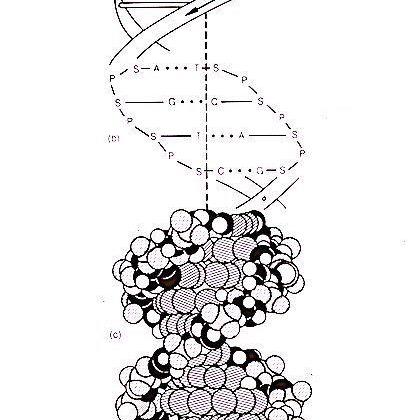While working with a rather large set of human germline polymorphisms, I recently asked myself whether the age of a given variant allele (or mutation) could be estimated from its allele frequency (the fraction of alleles at the relevant locus that are represented by the variant allele). Unsurprisingly, the answer seems to be ‘yes’ up to a certain degree — that is, provided that one is willing to settle for an ideal (and somewhat boring) population, to neglect some of the most important forces that shape population dynamics in the real world, and to accept a great deal of uncertainty in the answer. Nevertheless, looking at what is left after all these concessions are made — that is, the background force behind the most elementary patterns of mutation spread — is quite a nice exercise in itself, and provides a beautiful glimpse of a multidimensional probability distribution.
